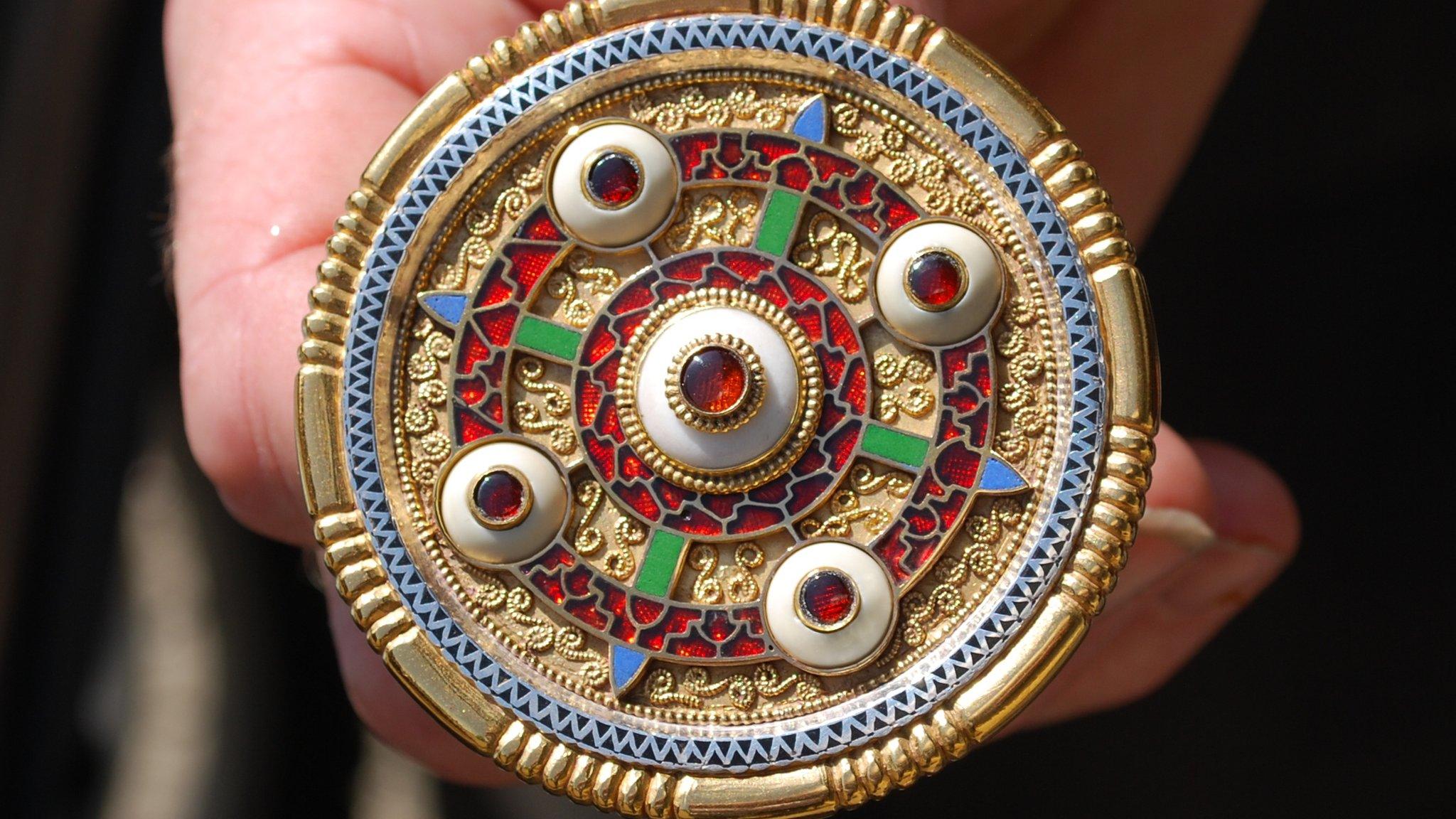Sutton Hoo bitumen links Syria with Anglo-Saxon England
- Published
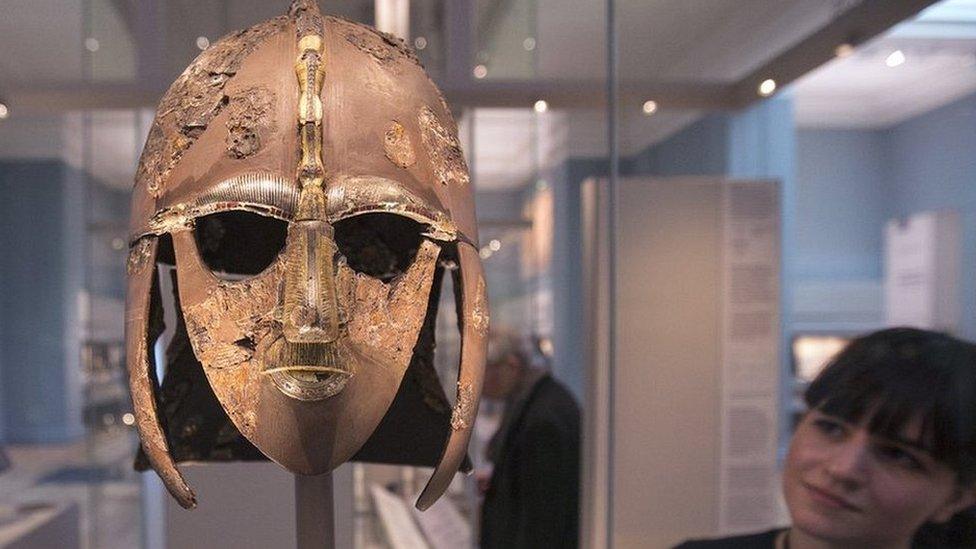
One of the greatest finds at the Sutton Hoo boat burial is this warrior's helmet, which is kept at the British Museum in London
Analysis of black organic fragments found in the Sutton Hoo boat burial has revealed they are bitumen from Syria.
The Suffolk site was excavated in 1939. Gold and garnet jewellery, silverware and ceremonial armour were discovered.
The small black objects scattered among the 7th Century finds were believed to be pine tar used for boat maintenance.
British Museum and Aberdeen University experts have revealed they are bitumen, external and said they demonstrated the "far-reaching" Anglo-Saxon trade network.
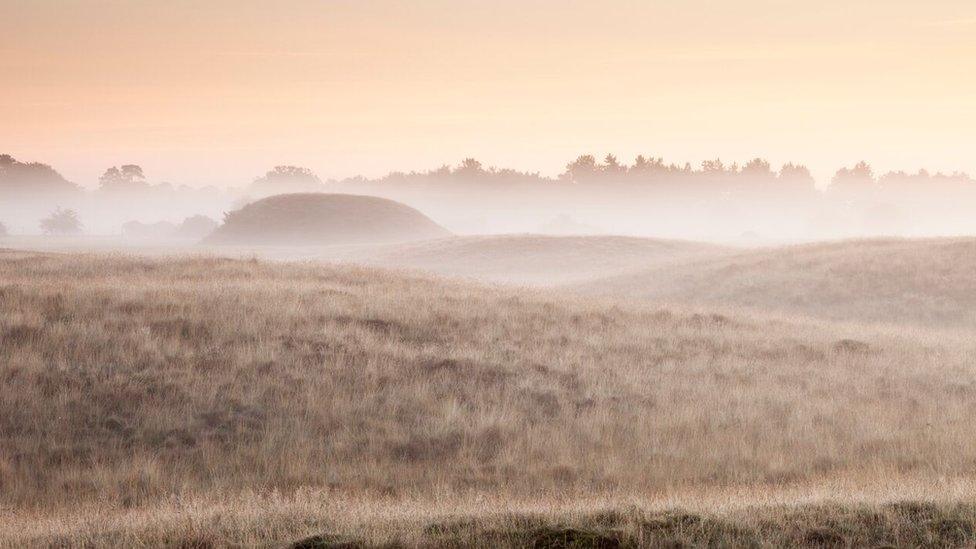
The burial ship was found in one of the mounds at Sutton Hoo, while other mounds contained items including a horse
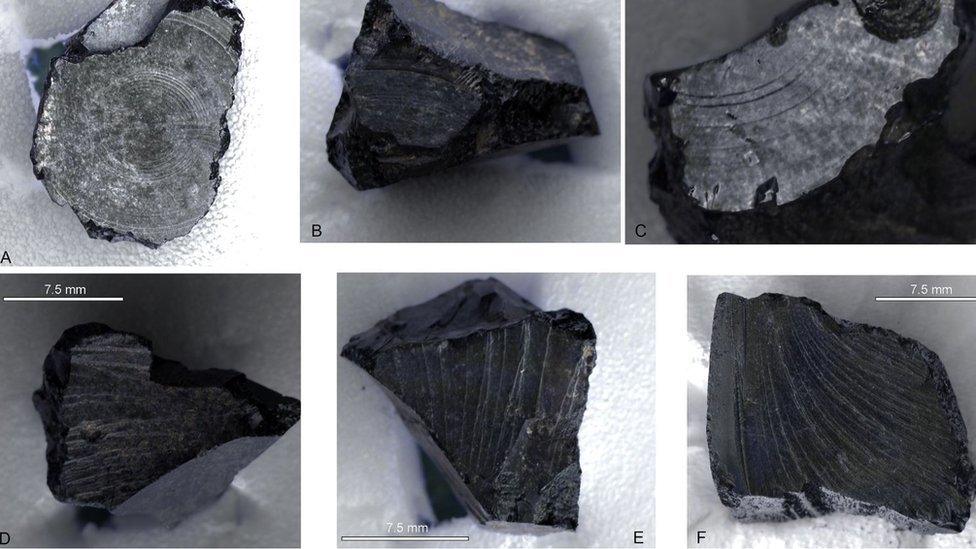
The find shows even 1,000 years ago petrochemical products were being traded internationally, according to Dr Stephen Bowden from Aberdeen University
They believe the petrochemical scraps should now be viewed as "exotic grave goods which can be counted among the other treasures from the burial".
The discovery was made when the fragments were included in an EU-funded research project, external studying the preservation of tars associated with ancient boats.
Pauline Burger, who analysed the material while on a Marie Curie Fellowship, external at the museum, said the result was "completely unexpected".
She said: "To find some undiscovered imported grave goods instead was tremendously exciting."
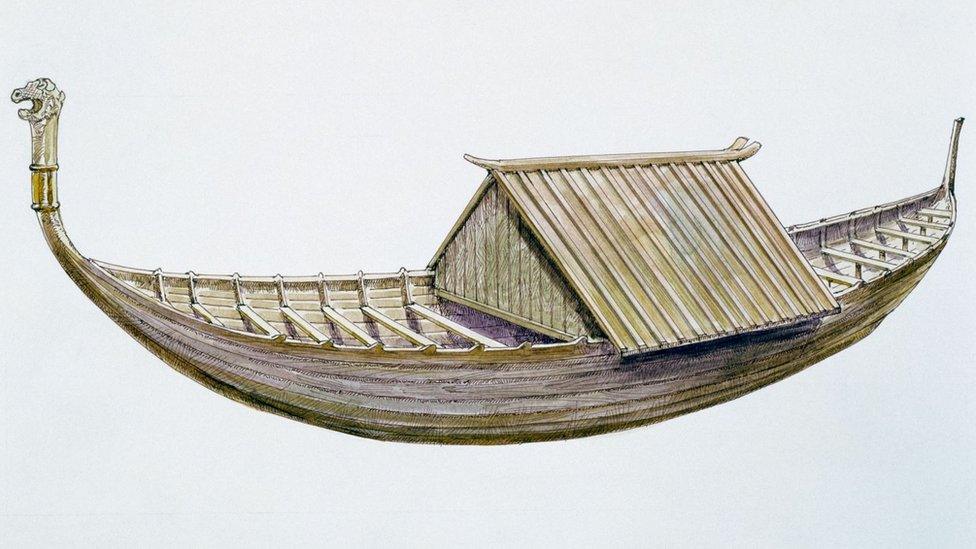
The British Museum said the bitumen should be seen as an exotic grave good and should be counted among the other treasures from the burial
The chemical fossils within "show this material comes from the Dead Sea family of bitumens, perhaps sourced in Syria", according to Stephen Bowden, from the University of Aberdeen.
Bitumen is a viscous or semi-solid oil deposit, which is also known as asphalt.
The British Museum has described archaeological finds of bitumen from ancient Britain as "extremely rare" - and said this is the first to be linked to the Middle East
The experts do not know if the fragments were part of a larger object whose other materials did not survive or the remains of small objects.
British Museum senior scientist Rebecca Stacey said: "Either way, it rewrites our understanding of the finds and shows that more than 75 years after its first discovery there is still much to be learnt about this remarkable burial assemblage".
- Published29 November 2016
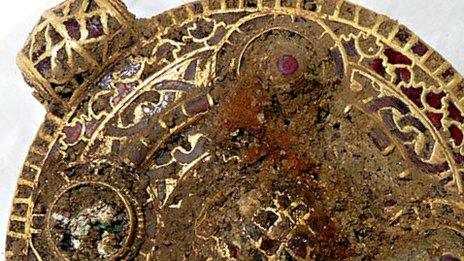
- Published16 November 2016
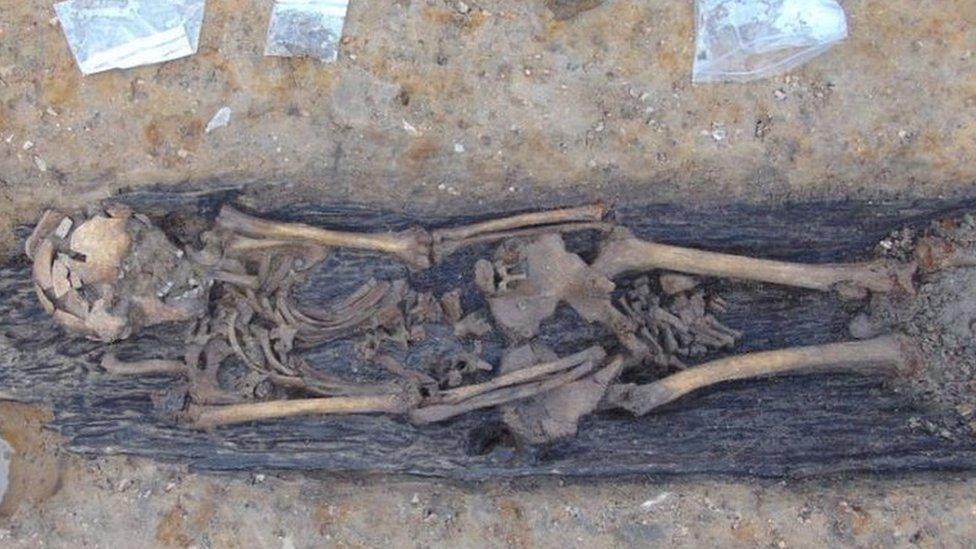
- Published20 September 2016

- Published19 November 2015
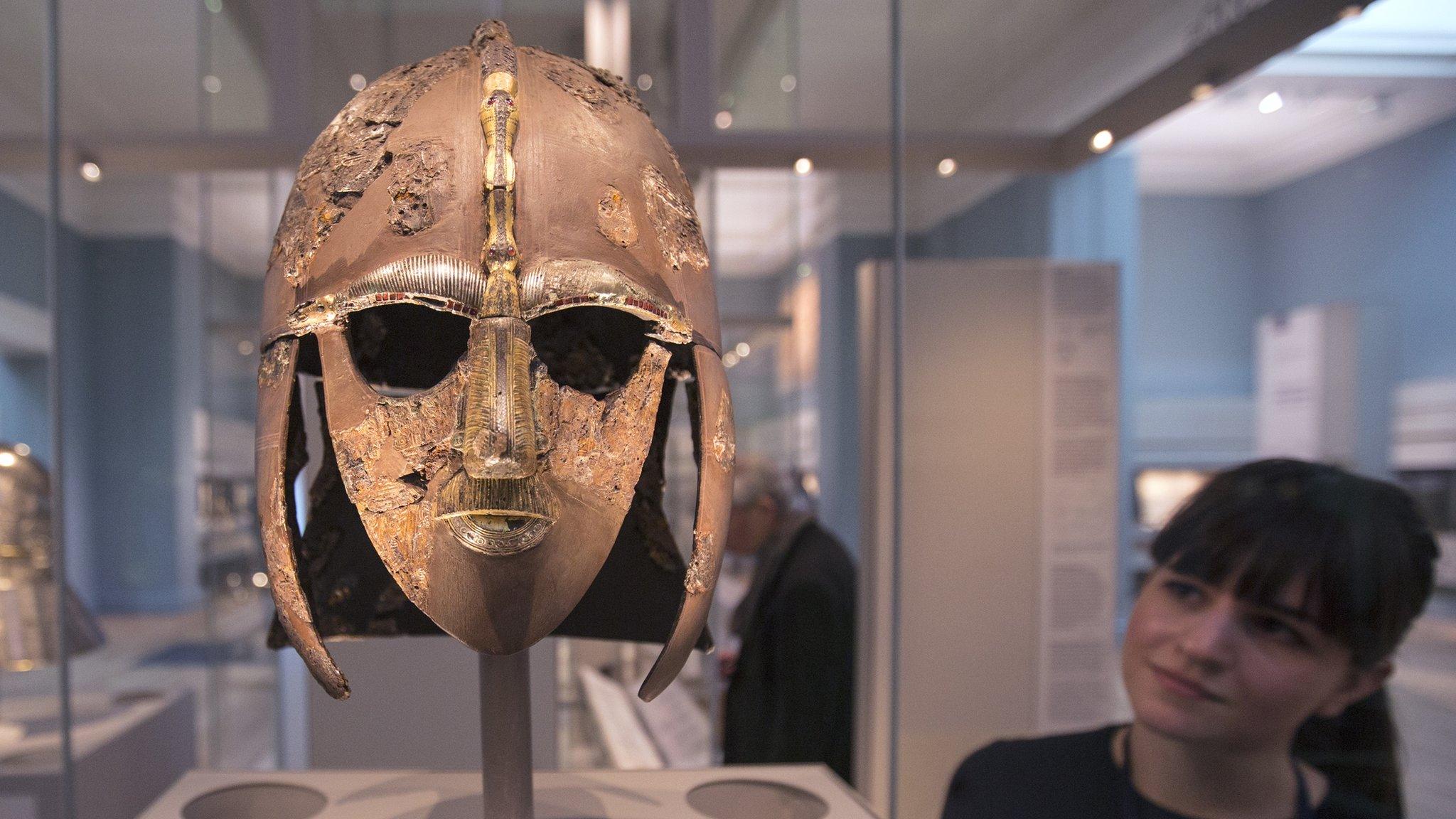
- Published26 July 2014
